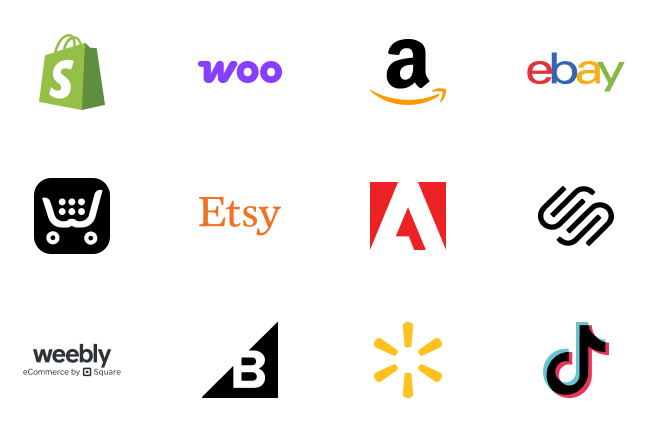India is a fast-growing emerging market projected to significantly boost eCommerce sales in the Asia region.
How many people purchase online in India?
With approximately 28% eCommerce penetration, India’s online market is projected to significantly increase by 2021. In fact, there is a projection that by 2020, approximately 329 million Indians are expected to rely more on buying their goods and services online.
In terms of revenue, forecasted growth will see India’s retail eCommerce increasing from approximately $16 billion in 2016 to approximately $45 billion in 2021.
As an eCommerce store owner, it makes sense to want to start selling to India based on these figures. However, it's worth noting that shipping to India isn't always easy.
Despite difficulties importing to India, it's still a market that's worth looking into. In this post, we'll discuss the figures we're seeing in India's eCommerce space, what Indians are interested in buying online, purchasing preferences, and what you can expect when shipping to India.
The growth of online mobile shopping in India
Research has shown that in 2016, approximately 23% of India’s internet users made online purchases using their mobile devices. Other research shows that approximately 27% of these online shoppers make monthly online purchases on mobile while 24% stated that they make weekly online purchases on mobile. Sales from India’s mobile retail eCommerce is projected to generate approximately $63.5 billion by 2020.
What Indians buy online
Before you decide on courier services and door to door delivery options to your Indian customers, it's important to know what Indians mostly buy online.
Research has shown that fashion accounts for approximately 35% of the total eCommerce transactions. Over 50% of fashion sales is clothing, followed by footwear at over 30%, and handbags and other accessories making up the remaining percentage.
Books account for approximately 21% of online sales, and electronics for about 20% of online sales in India, which include mobile phones, camera, computers, and related accessories.
Online purchasing preferences in India
When it comes to shopping, Indians are well-versed in omnichannel shopping as they participate in a mix of offline and online shopping.
In fact, approximately 50% of respondents in a survey indicated they purchased their mobile phones and major appliances through both online and offline options.
A good number of Indians are also impulsive buyers, which suggest that offering shipping services with fast deliveries could be useful in delighting customers.
Marketplaces that are leading the way
If you're interested in listing your products on a marketplace, there are 3 that you should be aware of: Amazon, Flipcart, and Snapdeal. Amazon alone rakes in approximately $437 billion in eCommerce sales annually, both with express delivery service and standard delivery service.
Interested in connecting your Amazon store to Easyship? Visit our Support Center for step-by-step instructions!
The best times to sell online in India
Thanks to a variety of festivals and holidays observed year-round, there's always potential for huge sales to be made if vendors effectively market themselves during these festive periods.
October through December has proven to be the peak sales period as some of the mostly widely celebrated festivals fall within this period.
From Diwali to Navratri, Dusshera, Durga Puja, and Christmas, you should ensure you have enough inventory to fulfill customer orders especially because the top leading marketplaces run very effective promotions during this time. For example, Amazon has the “Great Indian Festive Sale”, Flipkart does a “Big Billion Days Sale”, and Snapdeal does “Yeh Diwali Dil ki Deal Wali”.
What you need to know about shipping to India
Unfortunately, the duty threshold for all shipments to India is $0 USD, meaning every shipment will have duties applied, which your recipient will be responsible paying for.
Additionally, India requires more personal documentation from the receiver in order to complete deliveries. If the receiver doesn’t provide this information, your package risks getting returned. This means you should communicate to customers that they are responsible for providing the correct documentation in order to receive their packages.
Restricted items that may need to meet certain conditions or require a special permit:
- Seeds
- Dried fruits
- Live animals
- Plants
- Tobacco
- Alcohol
Prohibited items:
- Drugs
- Firearms
- Explosives
- Money
- Cultural goods
- Objectionable material
- Endangered species
- Radio transmitters
Please note the restricted and prohibited items list might change over time. It's best to check India's official customs website for updated information.
How to prepare for shipping to India
As mentioned above, shipping items into India can be a bit challenging due to additional identification required and higher shipping costs due to required duties.
In order to avoid additional delays, we advise eCommerce sellers to provide accurate and complete paperwork with your shipment. Using a shipping software like Easyship to automate this process will keep these types of errors to a minimum!
Conclusion
With the Indian eCommerce market projected to experience big numbers in the next decade, it's definitely a market to consider entering.
Clearly communicating to your recipients additional costs and documentation requirements is a great start in making sure the delivery experience goes as smoothly as possible.
Also, having accurate and complete paperwork will ensure that your shipments will pass through Indian customs without a hitch.
Ready to start shipping to India? Visit our Rates calculator to get an estimate in just a few clicks!















































.svg)
.svg)






.avif)
.avif)

.avif)
.avif)


.avif)


.avif)










.avif)
.avif)



.avif)
.avif)


.avif)
.avif)


.avif)



.webp)







.svg)





